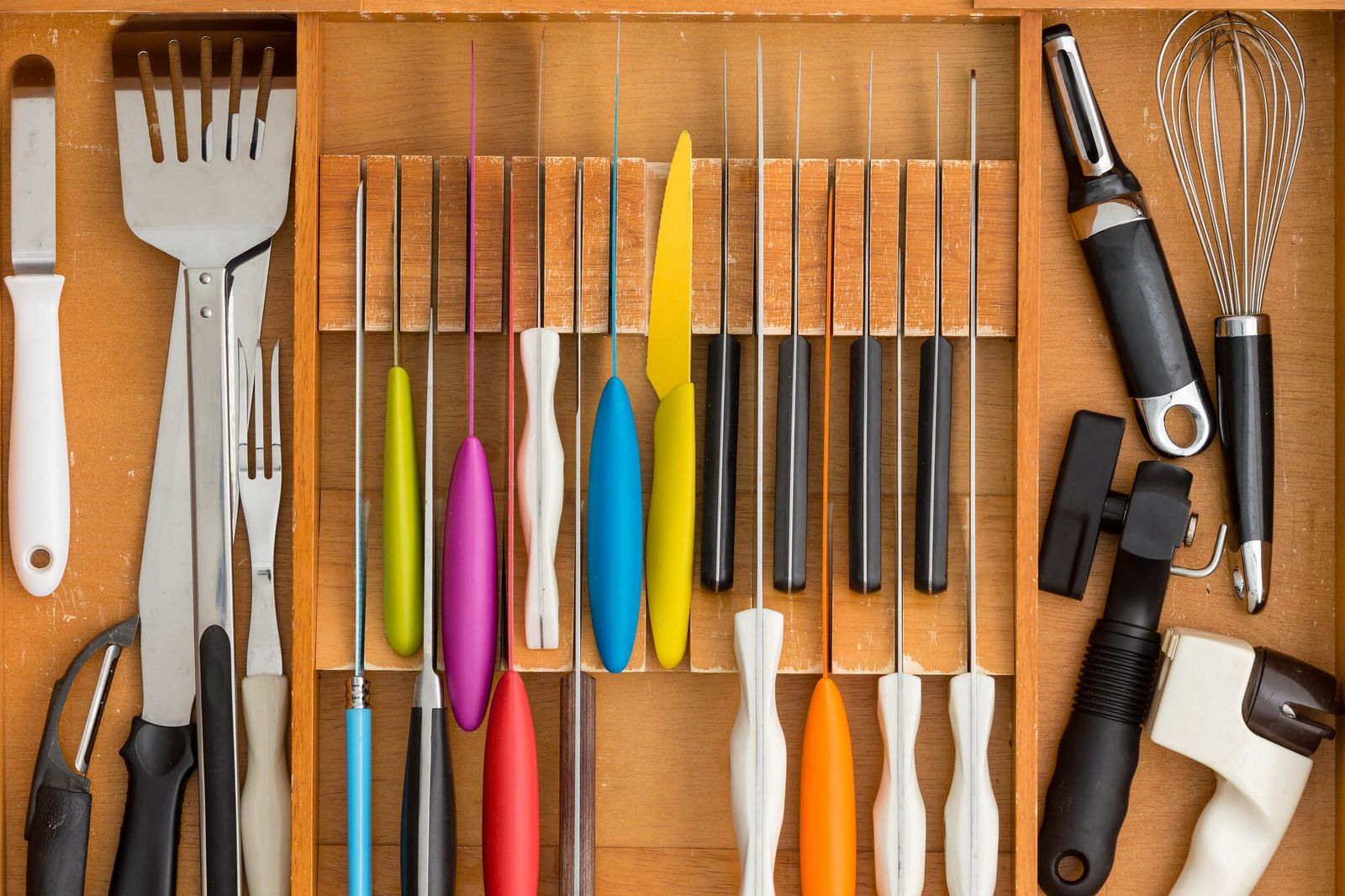Knife storage maintenance is an often overlooked but crucial aspect of kitchen management. Proper care and maintenance of your knife storage can significantly extend the lifespan of your knives, ensure their optimal performance, and, most importantly, maintain a safe kitchen environment.
This micro-post will delve into the importance of knife storage maintenance, provide regular cleaning and drying tips, guide you on checking for damages, and discuss proper storage techniques.
Jump To:
- The Importance of Knife Storage Maintenance
- Regular Cleaning and Drying
- Checking for Damages
- Proper Storage Techniques
- Conclusion
- Frequently Asked Questions
- Further Reading
The Importance of Knife Storage Maintenance
Maintaining your knife storage is not just about organization; it's about preserving the functionality and safety of your knives. When knives are not stored properly, they can become dull, damaged, and even pose a safety hazard.
Dull knives require more force to cut, increasing the risk of accidents, while damaged knives can break during use, leading to potential injuries.
Proper knife storage maintenance can prevent these issues, ensuring your knives remain sharp, safe, and ready for use.
Regular Cleaning and Drying
Cleaning and drying are fundamental aspects of knife storage maintenance. After each use, knives should be cleaned immediately to prevent bacterial growth.
This process involves washing the knives with warm water and mild soap, removing all food particles. It's important to avoid abrasive cleaning tools that can scratch or damage the knife blade.
Drying is equally important as moisture can lead to rusting, damaging the knife blade and affecting its performance. After washing, knives should be thoroughly dried with a soft cloth before being stored.
This process should also extend to the storage solution itself, whether it's a knife block, magnetic strip, or drawer insert, to prevent moisture build-up that can lead to mold or bacterial growth.
Checking for Damages
Regularly inspecting your knives for damage is another crucial aspect of knife storage maintenance.
This involves checking the blade for any chips, nicks, or signs of rusting. Any damage can affect the performance of your knife and can also be a safety hazard. If you notice any damages, it's best to have your knife professionally sharpened or replaced.
Regular inspection can help you catch any issues early, preventing further damage and maintaining the functionality of your knives.
Proper Storage Techniques
Proper storage techniques play a significant role in knife storage maintenance. Knives should be stored in a way that protects their blades and prevents them from causing accidents.
Here are some popular storage options:
- Magnetic Strips: These are a great option as they keep the knives in place, preventing them from moving around and causing potential damage. They also allow for easy access and visibility of your knives.
- Knife Blocks: These provide individual slots for each knife, protecting the blades from touching each other and causing scratches or nicks. However, it's important to ensure that the slots are cleaned regularly to prevent bacterial growth.
- In-Drawer Storage Solutions: Such as knife trays or in-drawer blocks provide a safe and space-efficient way to store your knives. They keep the knives secure and prevent them from moving around in the drawer.
- Knife Rolls or Bags: These are especially useful if you need to transport your knives. They keep the knives secure and prevent them from touching each other.
Each of these storage solutions has its benefits, and the choice depends on your kitchen space, the number of knives you have, and your personal preference.
Regardless of the storage solution you choose, it's important to ensure that it's kept clean and dry to prevent bacterial growth and rusting.
Conclusion
Maintaining your knife storage is crucial for the longevity of your knives and for your safety. By regularly cleaning and drying your knives, checking for damages, and using proper storage techniques, you can ensure that your knives stay in top condition for years to come.
If you're interested in learning more about how to choose the right knife storage solution, check out our article "Choosing Your Knife Storage Solution: Drawer Edition."
If you're looking for new knife storage or perhaps buying your first one, check out our article on the best in-drawer knife storage.
Frequently Asked Questions
What is the proper way to store knives?
Knives should be stored in a way that protects their blades and prevents them from causing accidents. Some popular storage options include magnetic strips, knife blocks, and in-drawer storage solutions.
What are three tips for storing knives?
- Clean and dry your knives before storing them.
- Store your knives in a way that protects their blades.
- Regularly check your knives for damages.
Where should knives never be stored?
Knives should never be stored in a loose drawer or any place where they can cause accidents. They should always be stored in a designated knife storage solution.
What is the safest way to store knives?
The safest way to store knives is in a designated knife storage solution that protects their blades and prevents them from causing accidents.
Further Reading
- Benefits of In-Drawer Knife Storage: A Comprehensive Guide: Learn about the various benefits of using in-drawer knife storage, from safety to space-saving.
- Choosing Your Knife Storage Solution: Drawer Edition: Get a detailed guide on how to choose the right knife storage solution for your kitchen.
- DIY Guide: Creating Your Own Knife Drawer Storage: If you're a DIY enthusiast, this guide will walk you through creating your own knife drawer storage.
- Exploring Innovative Designs for Knife Drawer Storage: Discover some of the most innovative designs in knife drawer storage in this article.



